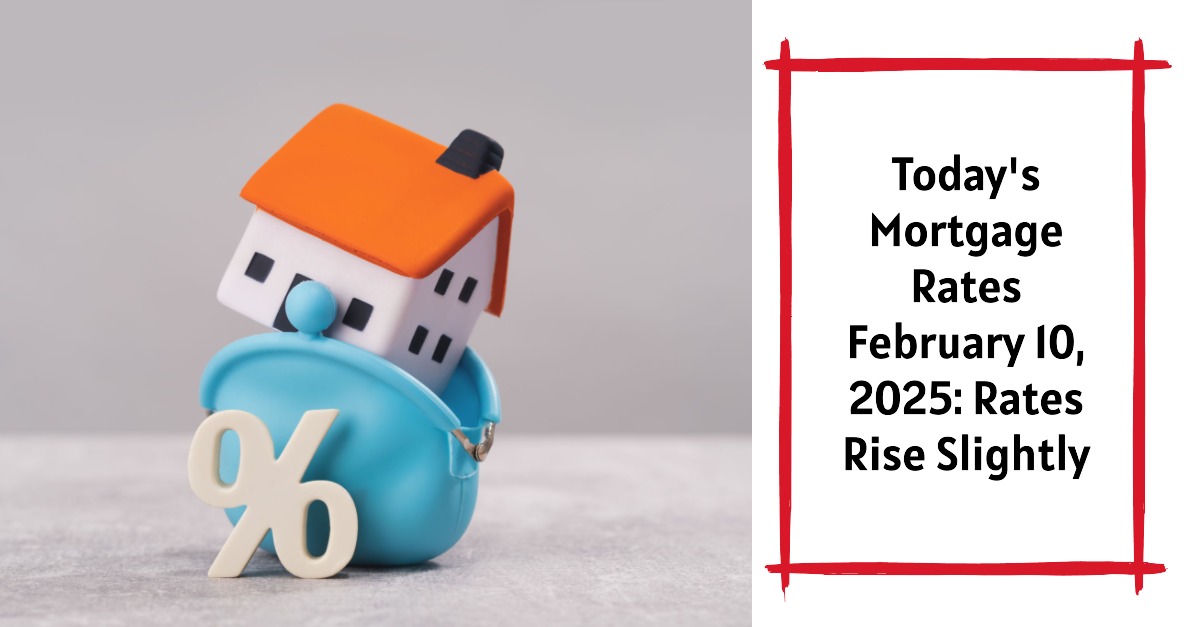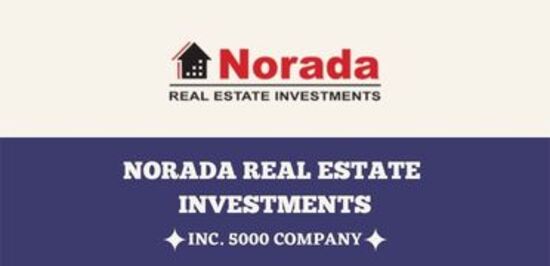Mortgage rates as of February 10, 2025, are around 6.60%, reflecting a slight increase compared to previous weeks. This increase is tied to persistent inflation concerns and the impact of economic policies under President Trump, which have kept rates elevated in recent days.
Today's Mortgage Rates February 10, 2025: Rates Rise Slightly
Key Takeaways
- Current Average Rates: 30-Year Fixed Mortgage: 6.60%; 15-Year Fixed Mortgage: 5.90%
- Market Uncertainty: Economic policies are affecting inflation, keeping mortgage rates on the rise.
- Future Trends: Rates may remain elevated in the near term but are expected to ease gradually over the coming months.
- Monthly Payments: Calculate your payments based on today's rates for various mortgage amounts.
Understanding current mortgage rates is crucial as they significantly impact the affordability of homes. As rates fluctuate, they can create waves in the housing market that affect buyers, sellers, and investors. If you're considering purchasing a home or refinancing an existing mortgage, being informed about current rates and how they impact monthly payments is fundamental.
Current Mortgage Rates Overview
According to Zillow's data, here are the average mortgage rates for February 10, 2025:
| Type of Mortgage | Average Rate |
|---|---|
| 30-Year Fixed | 6.60% |
| 15-Year Fixed | 5.90% |
| 7/1 Adjustable Rate Mortgage (ARM) | 6.42% |
| 5/1 Adjustable Rate Mortgage (ARM) | 6.81% |
| 30-Year FHA | 6.29% |
| 30-Year VA | 6.07% |
These rates indicate a relatively stable mortgage environment compared to the fluctuations witnessed in previous months. The 30-year fixed-rate mortgage remains the most popular option among homebuyers, providing long-term security against rate increases. However, it's essential for prospective homebuyers to keep a watchful eye on these rates, as they can influence the overall affordability of homes and impact buying power.
Understanding Mortgage Types
When looking at mortgage options, it’s important to understand the differences:
- Fixed-Rate Mortgages: These mortgages have a fixed interest rate over the life of the loan, making the payments predictable and stable. The 30-year fixed-rate is the most common, allowing for smaller monthly payments spread over a longer term, although it accumulates more interest over time.
- Adjustable-Rate Mortgages (ARMs): These loans start with a lower fixed rate for a set time and then adjust annually based on market conditions. This can lead to lower initial payments, but uncertainty exists if the rates rise after the adjustment period.
- FHA and VA Loans: Federal Housing Administration (FHA) loans are designed for buyers with lower credit scores or smaller down payments. Veterans Affairs (VA) loans are available to qualifying veterans and provide favorable terms, often with no down payment required.
Understanding these options can help prospective homeowners choose the right type of mortgage that fits their financial situation.
Monthly Payment Estimates
Calculating your mortgage payment based on current averages is a crucial step in figuring out what you can afford. Let’s break down the estimated monthly payments for various mortgage amounts using the current average rate of 6.60% for a 30-year fixed mortgage.
Monthly Payment on a $150,000 Mortgage
For a $150,000 mortgage at a 6.60% interest rate for a 30-year fixed mortgage, the estimated monthly payment is approximately $958.
Monthly Payment on a $200,000 Mortgage
For a $200,000 mortgage at the same rate, the estimated monthly payment would be about $1,277.
Monthly Payment on a $300,000 Mortgage
With a $300,000 mortgage at the current average rate, the estimated monthly payment would be around $1,916.
Monthly Payment on a $400,000 Mortgage
For a $400,000 mortgage, the monthly payment would be approximately $2,555.
Monthly Payment on a $500,000 Mortgage
Finally, a $500,000 mortgage would result in an estimated monthly payment of around $3,194.
| Mortgage Amount | Estimated Monthly Payment |
|---|---|
| $150,000 | $958 |
| $200,000 | $1,277 |
| $300,000 | $1,916 |
| $400,000 | $2,555 |
| $500,000 | $3,194 |
These payments do not include property taxes, homeowner's insurance, or private mortgage insurance (PMI), which could increase your overall monthly obligation. Keeping track of these additional costs is crucial for accurate budgeting.
Impact of Credit Scores on Rates
It’s essential to understand that your credit score plays a significant role in determining your mortgage rate. Generally, a higher credit score results in better rates, which translates into lower monthly payments and less interest paid over time.
Lenders typically consider the following score ranges:
- Excellent: 740 and above
- Good: 700-739
- Fair: 640-699
- Poor: Below 640
Improving your credit score can have a considerable impact on your mortgage options, making it worth the effort for potential homebuyers.
Factors Influencing Current Mortgage Rates
Mortgage rates are influenced by a myriad of factors, including economic conditions, Federal Reserve policies, and individual financial profiles. Here are some key elements that play a role:
Economic Conditions
Economic growth, inflation rates, and employment figures are major indicators that influence mortgage rates. When the economy is strong, demand usually increases, leading to higher inflation, which may prompt the Fed to increase rates.
The Role of the Federal Reserve
The Federal Reserve adjusts the federal funds rate to manage economic activity. While mortgage rates don’t directly change with the Fed’s actions, they often react to anticipated moves. As of now, with inflation above the Fed's 2% target, we’re likely to see mortgage rates stay elevated, although experts predict a gradual easing in the future.
Individual Financial Profiles
Lenders assess individual financial profiles, including credit scores, debt-to-income ratios, and down payment amounts. A lower debt-to-income ratio or a larger down payment can often lead to more favorable mortgage terms.
Market Sentiment and Policy Impacts
The current sentiment in the financial markets can also induce shifts in mortgage pricing. Recent concerns regarding the implications of President Trump's policies—specifically related to taxes and tariffs—have contributed to increased uncertainty, affecting overall interest rates. Investors tend to safeguard themselves against rising inflation, which can pressure mortgage rates upward.
Recommended Read:
Mortgage Rates Trends on February 9, 2025
Mortgage Interest Rates Forecast for Next 10 Years
Interest Rate Forecast for Next 10 Years: 2025-2035
Mortgage Rates Expected to Rise Further Due to Strong Jobs Data
Why Rates Matter
Understanding mortgage rates and their impact on home buying is vital for consumers. Higher interest rates lead to larger monthly payments, meaning that borrowers will not only pay more each month but also accumulate more interest over the lifetime of the loan.
For instance, consider the difference in overall cost between a 30-year fixed-rate mortgage at 6.60% versus 4.00%. For a $300,000 loan, the total interest you might pay over 30 years could soar into the hundreds of thousands based merely on rate variations. Thus, many potential homebuyers keep a close watch on rates and may rush to lock them in when opportunities to secure lower rates arise.
When seeking a mortgage, it’s generally advisable to shop around and obtain quotes from multiple lenders. Not all lenders offer the same rates, terms, or closing costs, so obtaining several offers can put you in a better position to negotiate.
Preapproval vs. Prequalification
During the mortgage application process, it’s also vital to understand the difference between preapproval and prequalification:
- Prequalification: This is an informal estimate of how much you can borrow based on a review of your financial situation. It often requires minimal information but doesn’t carry the same weight.
- Preapproval: This is a more formal process where lenders evaluate your financial history and assess your creditworthiness. Preapproval occurs after you submit an application along with documentation and often comes with a locked rate for a specific period.
Having a preapproval can provide you with a competitive edge when making an offer on a home since sellers are often more inclined to negotiate with buyers who are serious and financially vetted.
Work with Norada in 2025, Your Trusted Source for
Real Estate Investing
With mortgage rates fluctuating, investing in turnkey real estate
can help you secure consistent returns.
Expand your portfolio confidently, even in a shifting interest rate environment.
Speak with our expert investment counselors (No Obligation):
(800) 611-3060
Recommended Read:
- Mortgage Rates Forecast for the Next 3 Years: 2025 to 2027
- 30-Year Mortgage Rate Forecast for the Next 5 Years
- 15-Year Mortgage Rate Forecast for the Next 5 Years
- Why Are Mortgage Rates Going Up in 2025: Will Rates Drop?
- Why Are Mortgage Rates So High and Predictions for 2025
- NAR Predicts 6% Mortgage Rates in 2025 Will Boost Housing Market
- Mortgage Rates Predictions for 2025: Expert Forecast
- Will Mortgage Rates Ever Be 3% Again: Future Outlook
- Mortgage Rates Predictions for Next 2 Years
- Mortgage Rate Predictions for Next 5 Years
- Mortgage Rate Predictions for 2025: Expert Forecast
- Mortgage Rate Predictions: Why 2% and 3% Rates are Out of Reach
- How Lower Mortgage Rates Can Save You Thousands?
- How to Get a Low Mortgage Interest Rate?
- Will Mortgage Rates Ever Be 4% Again?


